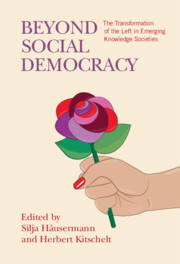Tables
1.1Social democratic policy proposals vis-à-vis different challenges
2.3Voting by types of historic and contemporary regional structures
4.1Simplified eight-class Oesch scheme with representative professions
6.1Inward and outward overlaps in Nordic and Continental European countries
6.2Inward and outward overlaps in Southern European countries
7.1Social democratic out-switchers by destination party and socio-demographics
8.2Party support and party switching among trade unionists and non-unionists, by region
8.3Socioeconomic groups, unionization, and party switching within the Left
8.A1Trade union membership and party choice as determinants of political preferences
8.A2Class and party choice as determinants of political preferences among labor unionists
10.2Distribution of the outcome variable: vote choices at t − 1 and t
10.5The impact of moderation on repeat voting for all left parties
10.6Incumbency effects for major left parties, conditional on economic performance
10.A3Does moderation drive major left parties’ voters toward minor left parties?
10.A4Does moderation of major left drive voters to the right?
11.1Strategic position of moderate left and right parties, electoral payoffs for outbound extreme parties in the left and right fields
11.2Payoff matrix for moderate and radical strategies of moderate left and moderate right parties
12.1Fiscal consolidations and the electoral performance of social democratic parties
12.2Different types of fiscal consolidation and vote share of social democratic parties
12.3The effect of spending-based consolidations on small left parties, the overall left field, and the likelihood of social democratic parties winning office
13.1Noninterim leaders of the SPD and their tenure from 1970
13.3Are there different effects for Social Democrats and other party families?

